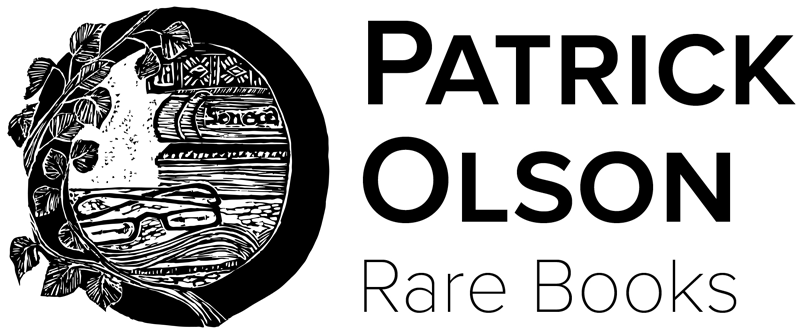Anticapitalist modifications | Likely Macclesfield presentation copy







Anticapitalist modifications | Likely Macclesfield presentation copy
The peace and happiness of this world, the immediate design of Christianity; a discourse on Luke IX.56: For the son of man is not come to destroy mens lives, but to save them; with an address in the close to the Deists, or those who deny the Christian Revelation
by Thomas Bott
London: John Noon, 1724
79, [1] p. | 8vo | A-K^4 | 202 x 117 mm
First and only edition of the Anglican clergyman's...you know...discourse on Luke 9:56. This was the author's first book, among a handful of theological works he published over the course of next twenty years. As the title suggests, Bott took issue with the Deists, who gained traction in the 1680s following some influential work by Charles Blount, though John Locke's 1690 Essay Concerning Human Understanding forced the group to recalibrate. ¶ This is a curious copy, very likely a presentation copy for Thomas Parker, 1st Earl of Macclesfield, who arranged Bott's appointment as rector of Whinburgh in Norfolk. The binding is doubtless of presentation quality, though we're rather drawn to the more eccentric measures taken to obscure the book's commercial evidence, to hide its basic hallmarks of participation in a capitalist system: the price printed beneath the imprint on the title, and the ads printed at end. A small piece of paper has been glued atop the former—Price one shilling faintly visible beneath—this area then hand-printed with several decorative elements. These must have been added by the binder, as the tool flanking this row of ornament was likewise used on the covers. A clean piece of paper has been pasted over the ads on the final page, where each title is likewise accompanied by a price (these also still faintly visible: Books printed for J. Noon, at the White Hart in Cheapside, near Mercers Chapel). ¶ Perhaps it'd be fairer to call these measures supracapitalist rather than anticapitalist, reflecting the donor's belief that the book's recipient—nobility, we guess—should exist above the everyday commercial, transactional concerns of society. Our alterations go beyond simply removing the price tag from a gift, especially when the binding, an emblematic example of the Harleian style, almost certainly cost more than the text. The style was very popular at the time, named after that commonly used on books bound for the famed Harleian Library. In typical Harleian fashion, our red goatskin features borders assembled from multiple rolls, surrounding central lozenge-shaped designs built up from smaller tools. Nixon identified quite a few binders who worked in this style, which became "the standard clothing of the finer books in a nobleman's library" (Nixon). Acorns and tulips figure in the rolls used for our borders, common decorative elements at the time (and well before).
PROVENANCE: Small embossed stamp of the Earl of Macclesfield on the title page, with his armorial bookplate on the front paste-down (South Library, press mark 153.A.30, the plate dated 1860). Given the role Thomas Parker, 1st Earl of Macclesfield, played in securing the author his rectory at Whinburgh, we strongly suspect Bott presented this copy to Parker. This 1st Earl started what became the legendary Macclesfield Library, which benefied from generations of collecting. The bookplate and embossed stamp were added to the Macclesfield books around 1860, regardless of which earl acquired them, and much of the library was sold at Sotheby's in 2004-2009. This book must have left earlier, as it bears the 1966 ownership signature of collector Brent Gration-Maxfield, with his extraordinarily neat notes penciled on a front fly-leaf. ¶ Old shelf-mark label on the front paste-down (D.R. 30.), and a perhaps contemporary mark inked on a rear fly-leaf (D.IV.5).
CONDITION: Contemporary gilt-tooled red morocco in the Harleian style; floral brocade endpapers, probably of Augsburg manufacture; edges gilt. In a modern cloth slipcase. ¶ Expertly rebacked, perhaps for Gration-Maxfield, whom we suspect had the slipcase made; corners also discreetly repaired. A very attractive copy, and quite fresh internally.
REFERENCES: ESTC T6335 ¶ B.W. Young, "Bott, Thomas," Oxford Dictionary of National Biography (2004), online (for Macclesfield's role in his rectory); Howard Nixon, "Harleian Bindings," Studies in the Book Trade (1975), p. 153 (cited above); Jane Greenfield, ABC of Bookbinding (1998), p. 136 (on Harleian bindings: "Books bound for the library collected by Robert Harley, first Earl of Oxford, and his son Edward. They were covered in bright red goatskin with a wide gold tooled border and an elongated central lozenge built up of small tools."); David Pearson, Speaking Volumes: Books with Histories (2022), p. 138 (“Expensive bindings may have been intended not to promote personal identity, but to woo influence or patronage. Countless examples exist of books which have been finely bound for such purposes—presentation copies of sermons, books given to a dedicatee, authors hoping that their books will be read, noticed or rewarded by being thus brought to the attention of someone in position to help them.”), 142 (“Using bookbindings to curry favour, by giving handsomely bound books to prospective patrons, is a tradition going back to medieval times")
Item #749
